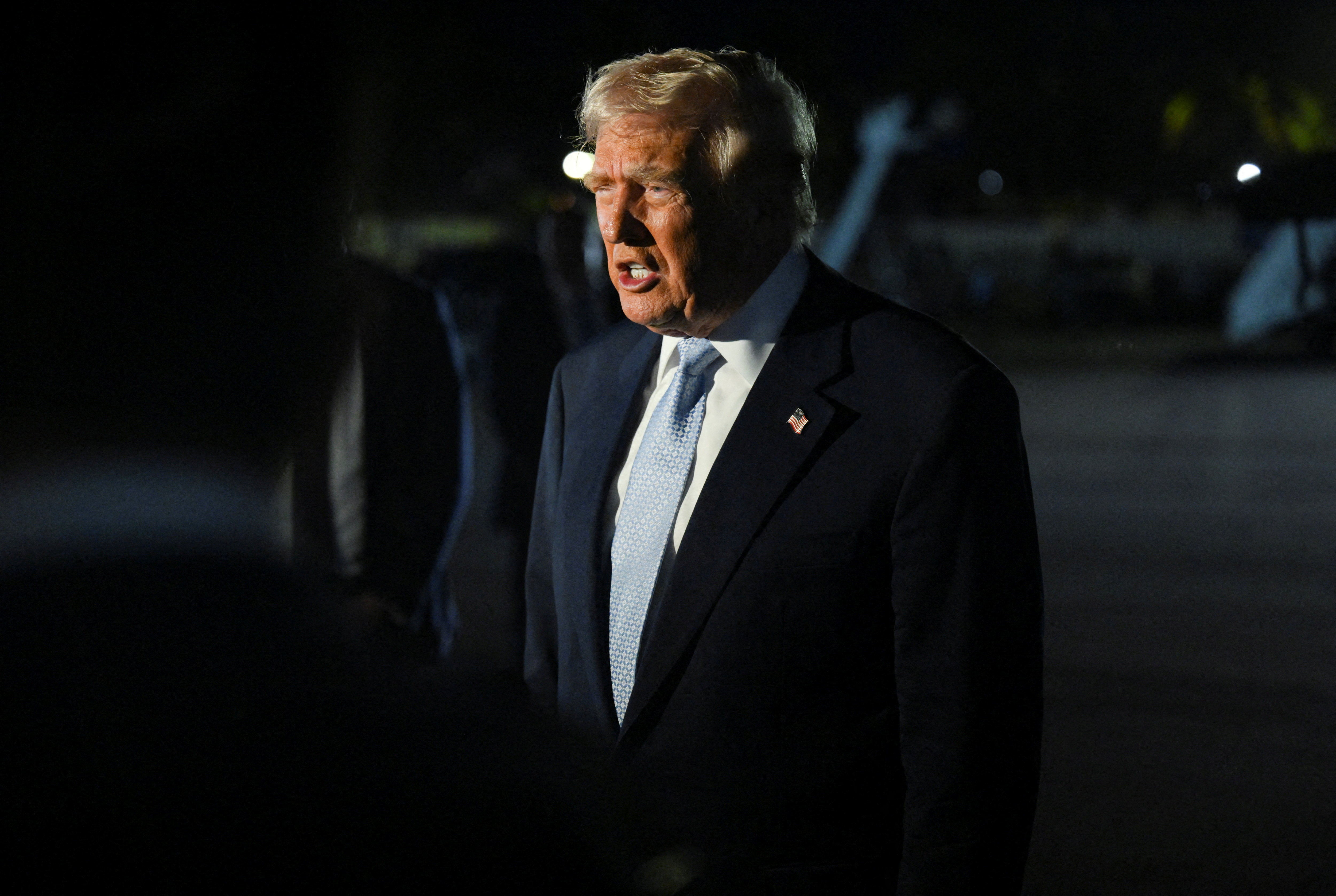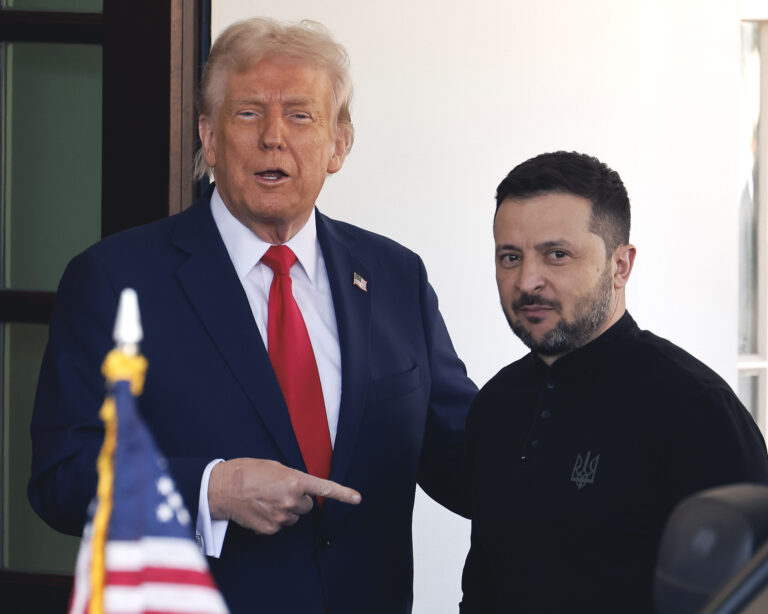On Thursday evening, Ukrainian MP Oleksiy Honcharenko released the 28 points of the latest peace plan from the United States. Kiev was again on the sidelines in the preparations. Information from available sources suggests that only two major powers were exchanging views with each other.
The plan does not differ in many respects from the concept that emerged from Donald Trump's August talks with Vladimir Putin in Alaska.
While the last time the possibility of a Trump-Putin summit in Budapest was floated, there was talk of freezing the current front line as a starting point for the West and Ukraine, the new plan again de facto attributes Crimea, the conquered territories in Zaporizhzhya and Kherson, as well as the entire Donbas (i.e., Donetsk and Luhansk) to Russia [even those parts controlled by Ukraine - it would be a demilitarized zone under Moscow's administration, editor's note].
In addition, it clearly accepts other Russian reservations and demands - speedy elections in Ukraine, renunciation of NATO membership, exclusion of the presence of allied troops on Ukrainian territory, reduction of the army to 600 thousand troops.

It contains a number of points with which Kiev has long disagreed. Some political leaders have already made clear on specific points that they are behind the red line.
Leaders in Europe are also taking the same approach to the plan, from where it has been suggested that it would essentially be a capitulation by Ukraine. The points put forward must, in their view, only be a starting line for further negotiations involving both Kiev and the leaders of the old continent. Ukraine is to have the key word.
The media, meanwhile, interpret the plan as a renewed move towards meeting the (according to a critic, maximalist) Russian demands that came to the surface after the Putin-Trump meeting in Alaska.
They are right. But while we may complain loudly in spirit about this injustice, it should be clearly stated pragmatically that this shift is necessary, even welcome, given the realities of power.
To be clear, Russia has no right to any Ukrainian territory. In an ideal world, it should leave every corner of the occupied territory. But we do not live in such a world.
Kiev, with its allies at its back, is currently pulling the short end of the stick. It is hard to imagine that anything short of the direct involvement of allied troops in a (world) war will change this trend.
The Russian army has already tightened the noose around Pokrovsk and Myrnohrad. One town has already de facto fallen, as evidenced by various published images. Soon the latter will have to capitulate as well, where the defenders are no longer able to reach new supplies and are almost completely cut off.
Meanwhile, the agglomeration was a major Ukrainian hub and part of the best fortified defensive line. Although there are others behind it, by capturing it, Russian forces open the door to a more rapid advance into more low-lying areas - notably Zaporizhzhya, but also towards Kramatorsk and Sloviansk and full control of the Donbas.
The Russian advance is not all that fast. This year Moscow has conquered around five thousand square kilometres of territory. Slightly less than the Ukrainians still control in the Donbas.
Whether it is months or years away, there is no sign that the situation on the battlefield is about to turn around and the Russians should stop advancing.
The economic situation in Russia is gradually beginning to favour peace. The effect of the military fiscal stimulus has almost worn off. But even further sanctions, such as those against Lukoil and Rosneft, will not bring the Russian economy crashing down. They will bite, but they will not change the trend. And if the US pushes the saw too hard (as it did with India), it will risk a significant deterioration in relations with the global South and its tilt towards China and Russia.
So Ukraine has nothing to look forward to.
Let us keep our fingers crossed for her to negotiate the best possible compromise.
However, it will still have to respect the terms of the stronger. Russia, in particular, will have to be satisfied with the agreement. Otherwise, there will be none and the Donbas will end up in Moscow's hands anyway. Only with the difference of thousands of dead and tens of thousands of mourning survivors on both sides.
The good news is that, while voices are being heard from Ukraine rejecting the latest proposal, there are also signs that Kiev is gradually accepting reality. The first swallow was last month's news that it was willing to accept a border freeze along the current front line.
In addition, the Financial Times reported in recent hours that the Ukrainian president met on Thursday with a US military delegation led by Defense Secretary Daniel Driscoll to discuss a peace plan.
A U.S. military spokesman told reporters in Kiev afterward that Driscoll and Volodymyr Zelensky "agreed on an aggressive timetable for signing" the peace plan, which would first be a "U.S.-Ukraine agreement" but would take into account a number of Russian demands - including a commitment not to allow Ukraine to join NATO or to prohibit the stationing of allied forces on its territory. The formulation of an aggressive timetable for the signing is said to have been confirmed by Julia Davis, chargé d'affaires of the US embassy in Ukraine, according to the Washington Post.
Of course, recent reports of corruption reaching into the President's closest associates may also be behind some of the President's willingness. Zelensky's chair is wobbly and Donald Trump is a relentless negotiator. Still, this is good news.
Certainly, the road to peace will still be thorny. The diplomatic struggle over the remnants of the Donbas that Ukraine controls will probably take the longest. But even the question of the legal status of the territories may not be closed. It will also be necessary to develop security guarantees for Ukraine, which have so far been formulated rather vaguely.
The chances of concluding peace by 27 November (Thanksgiving Day in the US), the date that the US President is pushing for, are therefore not great. Nevertheless, we are once again a little closer to it.
